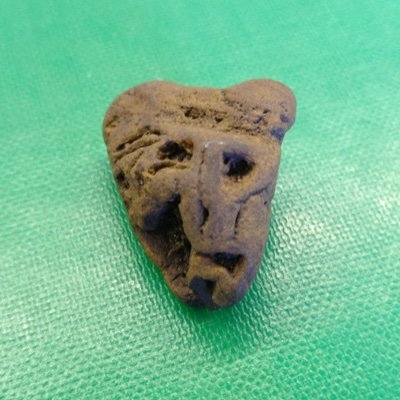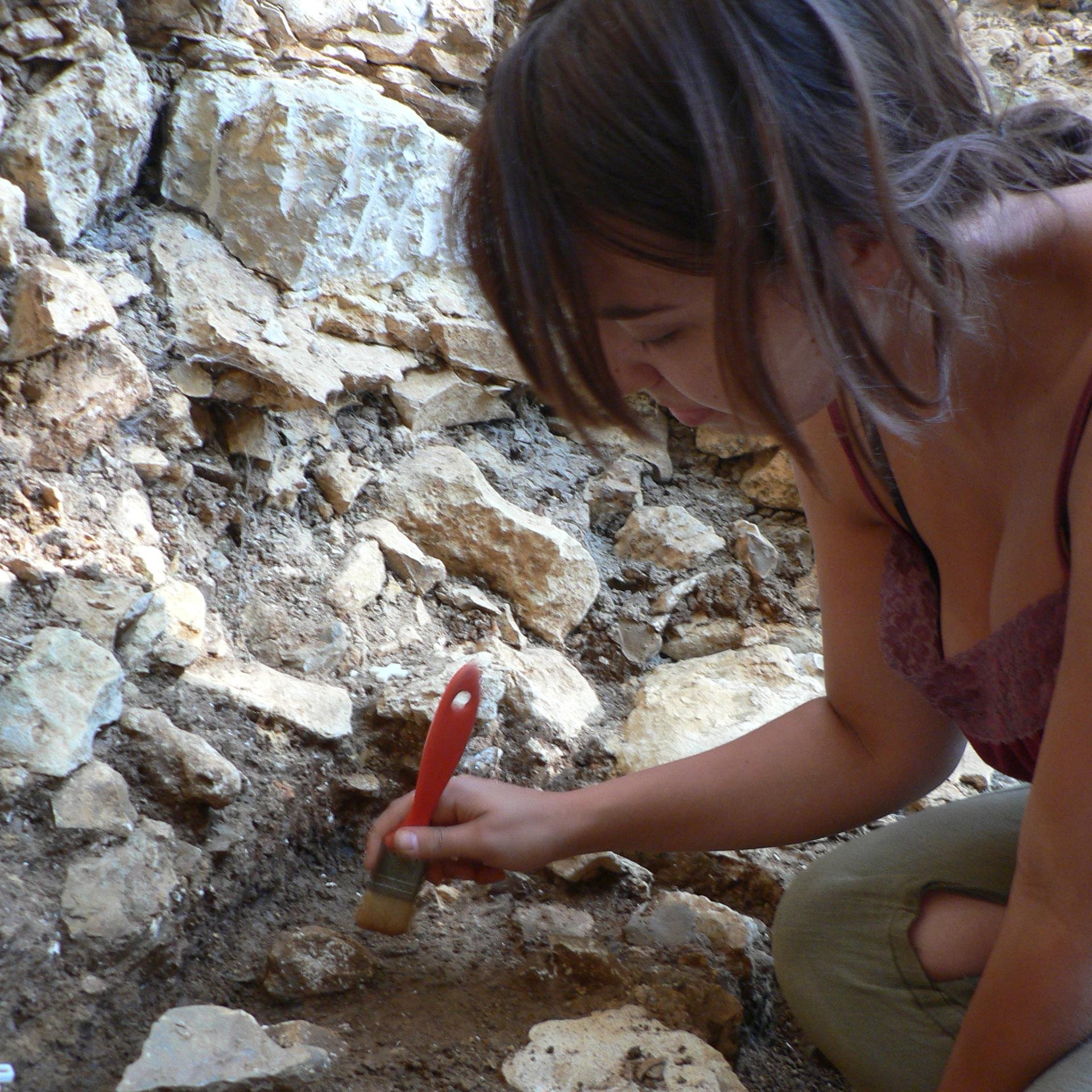
Silvia Bello
@SilviaBello14
Followers
264
Following
70
Media
6
Statuses
58
Anthropology Archaeology Science
Marsworth, England
Joined August 2017
https://t.co/a6RcistYvQ Our recent paper on Neanderthals butchery behaviour.
frontiersin.org
Amud and Kebara caves (northern Israel) are two broadly contemporaneous Middle Paleolithic sites dated to ca. 70–50 Ka BP, both located in the Mediterranean ...
0
3
4
#Fossil discoveries from the Java seabed reveal that #HomoErectus inhabited and hunted across Sundaland 140,000 years ago, offering new insights into early human adaptation and Southeast Asian ecosystems. @unileidennews
https://t.co/muGUflpnew
phys.org
Archaeological finds off the coast of Java, Indonesia, provide insight into the world of Homo erectus, 140,000 years ago. Skull fragments and other fossil remains provide a unique picture of how and...
1
14
19
📢 Join us this Friday, May 16, at 4 PM CET for the online lecture "Homo erectus from the Sea: New Discoveries from the Sunda Shelf." Platform: MS Teams 👉 Follow us for more: @INQUA 🔗 https://t.co/Tol8TdMenD
0
5
13
Homo erectus in Java: 140,000-year-old fossils found in submerged river valley. Quaternary Environments and Humans The newly uncovered Madura Strait fossil assemblage and its role in Pl...
0
1
2
La isla de Gran Bretaña tiene más de 200 mil kilómetros cuadrados. Los dos únicos casos de canibalismo prehistórico conocidos proceden de yacimientos separados por media hora de paseo (3km). Caprichos de la historia.
3
7
51
Preservation of human skulls. Also part of a special collection on: Biocultural Taphonomies: Teasing apart taphonomic variables in bioarchaeology Journal of Archaeological Method and Theory https://t.co/RoeTejStn8
link.springer.com
Journal of Archaeological Method and Theory - The human cranium is probably the most common single anatomical element manipulated after the death of the individual. However, it is not uncommon to...
0
5
15
Not the most festive paper, but a useful review of historic and ethnographic evidence of cannibalism. https://t.co/WvvfXQn23E
link.springer.com
Journal of Archaeological Method and Theory - Taphonomic studies of osteoarchaeological human assemblages have mainly focused on establishing recognisable markers that allow us to discriminate...
1
11
39
Quaternary Environments and Humans. Brand new journal launching from INQUA. Edited by Zerboni @SilviaBello14 Lizuka and Kolar. Open Access and zero APCs for the first issue. Welcomes monographs and special issues. ❄️ 🏔️ 🏜️ 🌿 🌺 🌲 👣 🔥 🦌 🦣 🌎
0
9
24
@JamesColeArch @PalmiraSaladie @SilviaBello14 @BrianaPobiner @newscientist @m_c_marshall Curious whether this will instigate a rebuttal from those adamant that cannibalism is not true? I guess I’m thinking of articles like this? 👇🏽
1
1
0
In this week’s issue: the surprising reasons humans have been eating each other for millennia. Grab a copy in shops now or download our app for digital editions. https://t.co/3DXvgkCn9V
13
21
49
The first Italian men's singles champion, Jannik Sinner 🇮🇹 #AusOpen | @federtennis
https://t.co/pqMMZr39hc
5
75
775
This is a terrific study from Simon Parfitt & Silvia Bello, a huge amount of time & detail to bring new insights into early human technology & thought (& I'm very chuffed to see a quote from my first book from 1997, backed by new research!). Handaxes rock https://t.co/HOmyRd8tE5
royalsocietypublishing.org
The use of bone tools by early humans has provided valuable insights into their technology, behaviour and cognitive abilities. However, identifying minimally modified or unshaped Palaeolithic osseous...
0
5
22
Traces of stone tools on prehistoric human teeth from daily activities and cultural practices 'Non-masticatory striations on human teeth from the British Upper Palaeolithic to the Neolithic' #toothwear #archaeology #prehistory
https://t.co/EtVMteo91i
nature.com
Humanities and Social Sciences Communications - Non-masticatory striations on human teeth from the British Upper Palaeolithic to the Neolithic
0
11
19
@RoyalAnthro Conf in honour of @ChrisStringer65 😍😍 Nick Ashton, @MatthewPope @WoganCavern @SilviaBello14 William Marsh Rainer Grun @Harvatilab_tue @huw_groucutt @DrEleanorScerri @tommyhigham Robert Foley Xijun Ni Francesco d'Errico @MatejaHajdi @pontus_skoglund Matthias Meyer
2
10
51
Bone tools, carnivore chewing and heavy percussion: assessing conflicting interpretations of Lower and Upper Palaeolithic bone assemblages - Simon Parfitt and @SilviaBello14
https://t.co/WMc3rY4P2c
0
1
4
Good start of 2024! Our thoughts on bone modifications at Boxgrove and Gough's Cave. Bone tools, carnivore chewing and heavy percussion: assessing conflicting interpretations of Lower and Upper Palaeolithic bone assemblages | Royal Society Open Science
royalsocietypublishing.org
The use of bone tools by early humans has provided valuable insights into their technology, behaviour and cognitive abilities. However, identifying minimally modified or unshaped Palaeolithic osseous...
4
11
39
Italy won the Davis Cup. A great team, and a majestic Jannik Sinner. https://t.co/zan0PZQ5uc -
tennis365.com
Italy's heroic Davis Cup team celebrated late into the night in Malaga as they won their first title in nearly 50 years, but there was special praise for one player who was unable to compete in the...
0
0
0
@MatthewPope @SilviaBello14 William Marsh up next on the biomolecular side of the Magdalenian at Gough’s Cave… (The no photos sign I assume is for slides other than the title slide!)…😜
2
2
9
@MatthewPope The excitement continues with @SilviaBello14 presenting her talk on Gough’s Cave, and the history of that fabulous site…
1
3
16



















